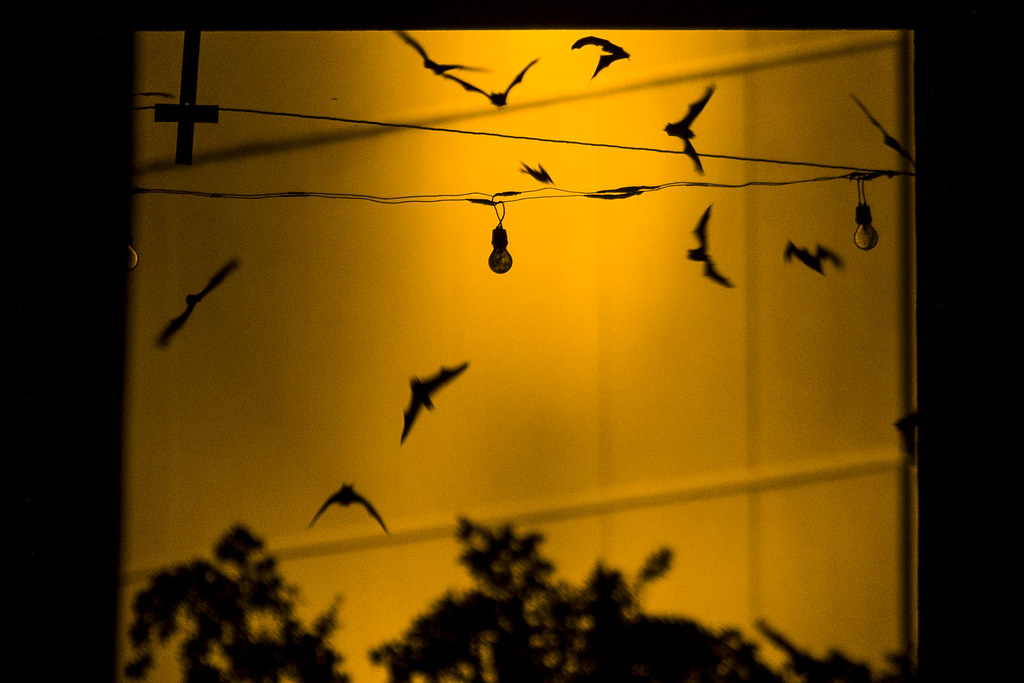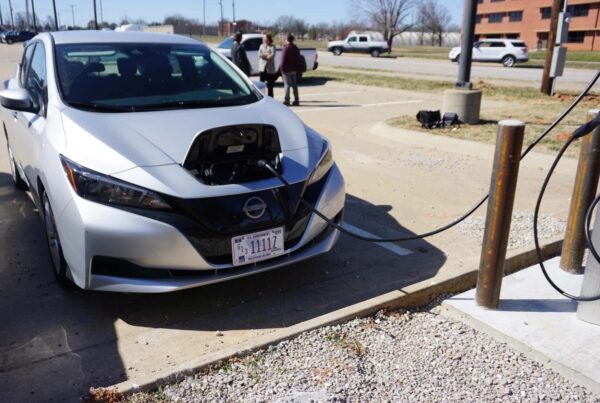Bats are something of an unofficial mascot for Austin, home to 1.5 million Mexican free-tailed bats – the largest urban colony in the word. Outside the capital city, Texas abounds with places to see the winged mammals, including Bracken Cave just outside San Antonio.
Though Texas is home to a wide variety of bats – 32 of the 47 species native to the U.S. can be found here – we could see a massive decline in their numbers in the coming years, according to a new report from Austin-based Bat Conservation International. The first-of-its-kind report brought together researchers from across the U.S., Mexico and Canada to assess the state of North America’s bat populations and found that 52% of the continent’s bat species are at risk of significant population loss if conservation measures aren’t taken.
Winifred Frick, lead scientist for Bat Conservation International, spoke with the Standard about why bats need protection, and what people can do to help.
This transcript has been edited lightly for clarity:
Texas Standard: Before we get into the findings, can you tell us a little bit more about the scope of this report? How is it conducted? Who was involved?
Winifred Frick: This is the first-ever report of its kind. Over 100 bat experts contributed to assessing the status of bats across Canada, the United States and Mexico. It was a trilateral effort to assess our bats in North America.
Wow. So the findings seem pretty alarming. Some top-line points — 52% of North American bats are at severe risk of population decline in coming years. Can you tell us a bit more about these bat populations?
Yeah, bats are an incredible part of our biodiversity here in North America, and we’re really worried about the status. The experts think that within the next 15 years we could see serious declines in over half of our species that call North America home.
Let me ask you a practical, basic question, since I’m in Austin – I think a lot of folks in Texas know about the bat bridge and come down there and wait for the bats to come out. And quite often they don’t. And I think a lot of people have been hearing about declines in the bat population; are we already starting to experience the effect of those declines here in Texas?
Yes. So in Texas, the cave myotis, which is one of the species that hibernates in Texas, are starting to decline from the disease called white nose syndrome, which is caused by a fungus. And Mexican free-tails, which are the iconic bat of Texas – and who you watch coming out of the Congress Avenue Bridge in Austin and at Bracken Cave near San Antonio – those bats experienced big die-offs during the big freeze event in Texas. So that’s an indicator of the effects of climate change on our bat populations, as well as disease. So bats in Texas are getting hit, but we’re doing everything we can to protect them.
Is population decline accelerating compared to previous years or events like, you know, that big freeze – could they be thought of as sort of one-offs or single isolated catastrophic events?
Well, climate change can be both a direct threat, as well as an amplifier of other threats. And so bats are facing lots of different threats. So, you’ve got a catastrophic event like the big freeze, but you also have, you know, we’re losing a lot of insects, which are the prey base for bats, through both the effect of climate change but also other kinds of stressors, like land use change and urbanization and use of pesticides. So all of these things kind of add up together to paint a pretty grim picture for the future of bats.
Well, we’re talking about sort of the ecosystem in that macro level. What would a significant decline in the bat population mean for our environment?
Well, it would be devastating to our agricultural industry. Bats provide billions of dollars of value to our U.S. farmers. And some of the best work studying the value of bats to agriculture has been done in Texas. And so we know that Mexican free-tailed bats and other bat species are eating tons of insects every night that help our farmers. So that would be really devastating to our agriculture.
Is there anything that folks can be doing to help bats? I mean, you think about how we’re often urged to plant milkweed for butterflies, for example. Is there anything people can put in their yards or things that people can avoid doing to help bats’ chances of survival?
Absolutely. There’s lots of things that people can do to help bats. In fact, we have a whole Gardening for Bats program at Bat Conservation International, where we’re encouraging people to plant native plants in their yard; that helps boost insect populations and gives bats more to eat. Protecting natural habitats – old trees are great bat homes – so anything you can do to kind of reduce your pesticide use and allow for more natural habitats.
You can also support organizations that help bat conservation. That’s one of the things in our State of the Bats report, is talking about all the ways that people can help and contribute to bats.
All right, let’s pull back. What sort of policy changes or protections would you at Bat Conservation International like to see in order to protect those populations?
Well, there’s this wonderful proposed law called Recovering America’s Wildlife Act that would provide federal support to states that would be directed towards helping wildlife conservation at the state level. So supporting Recovering America’s Wildlife Act would be a game-changer for bat conservation and wildlife conservation in the United States, full stop.














